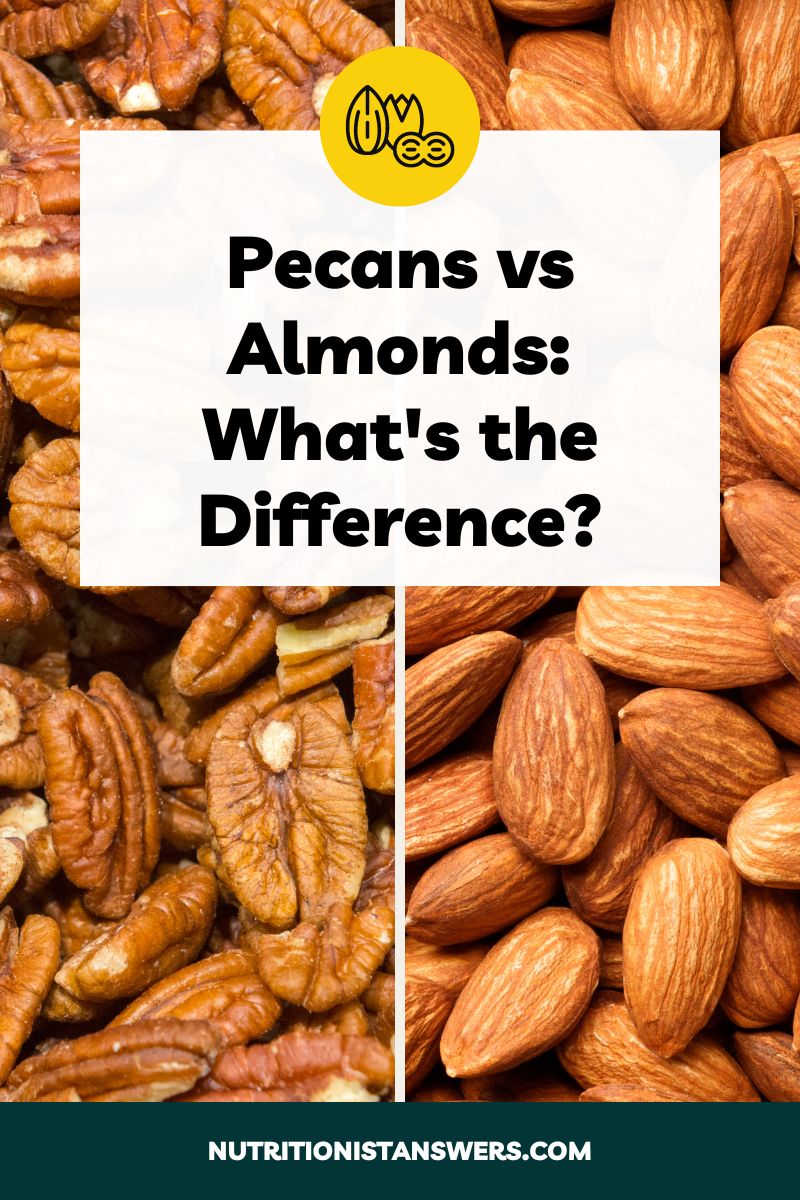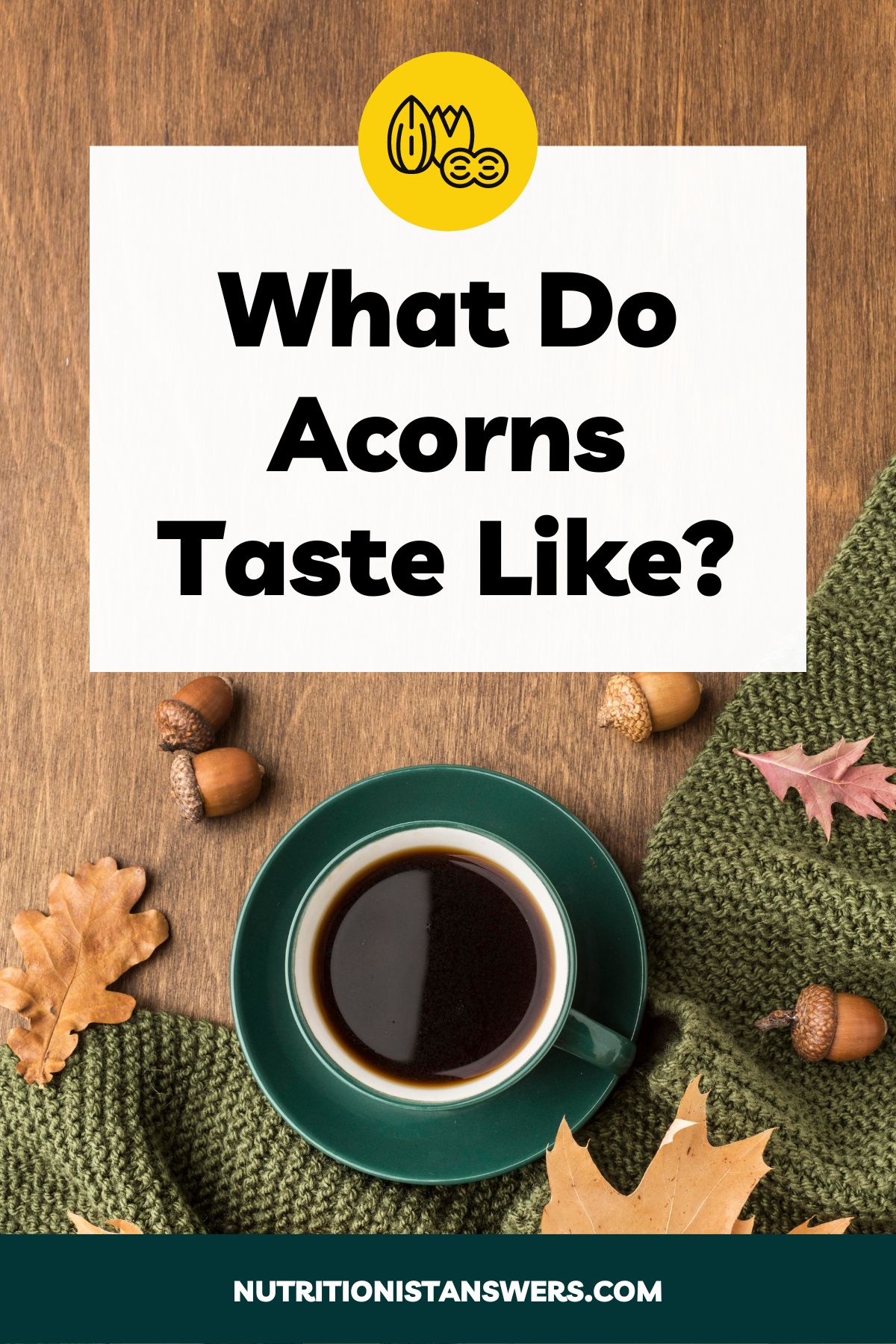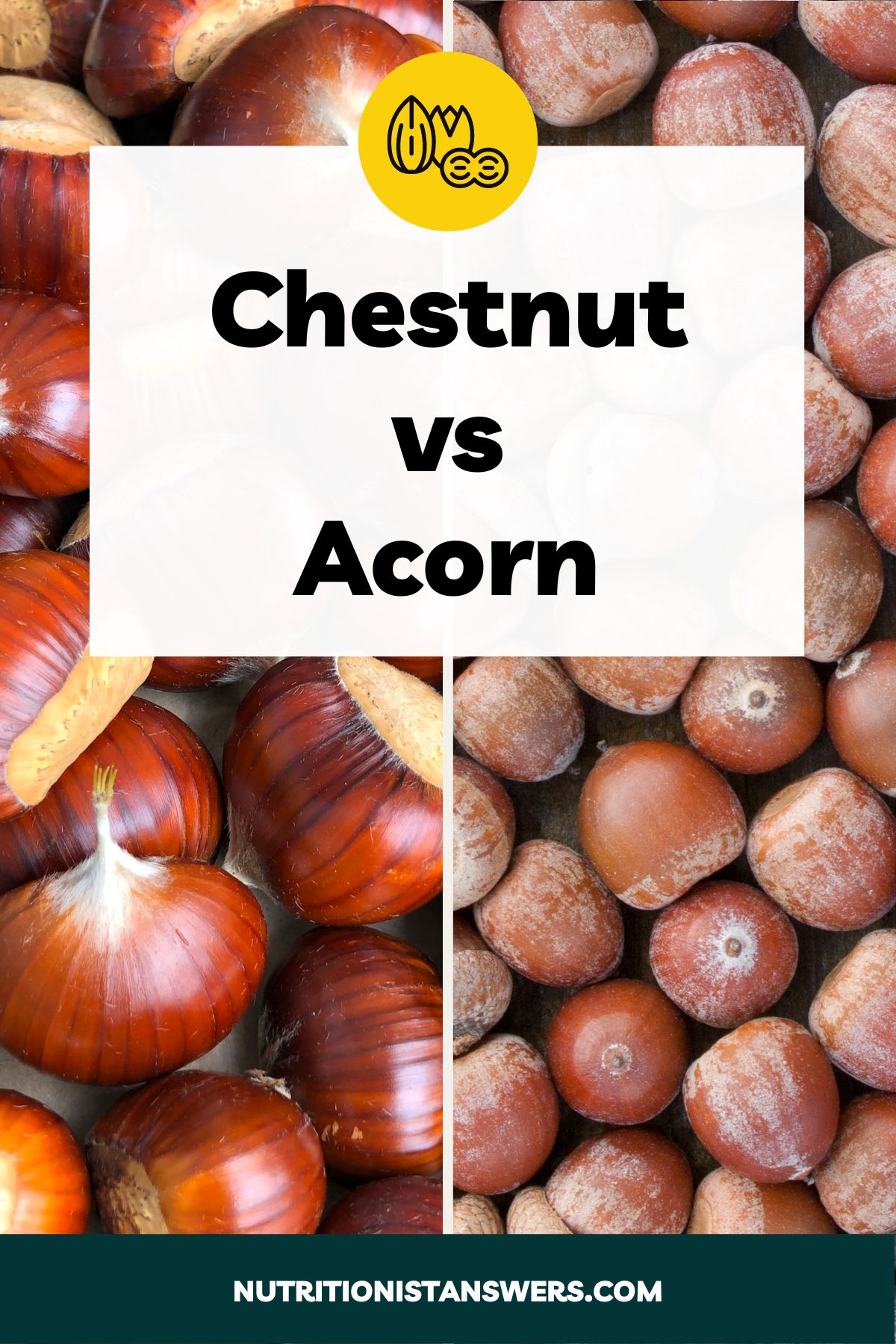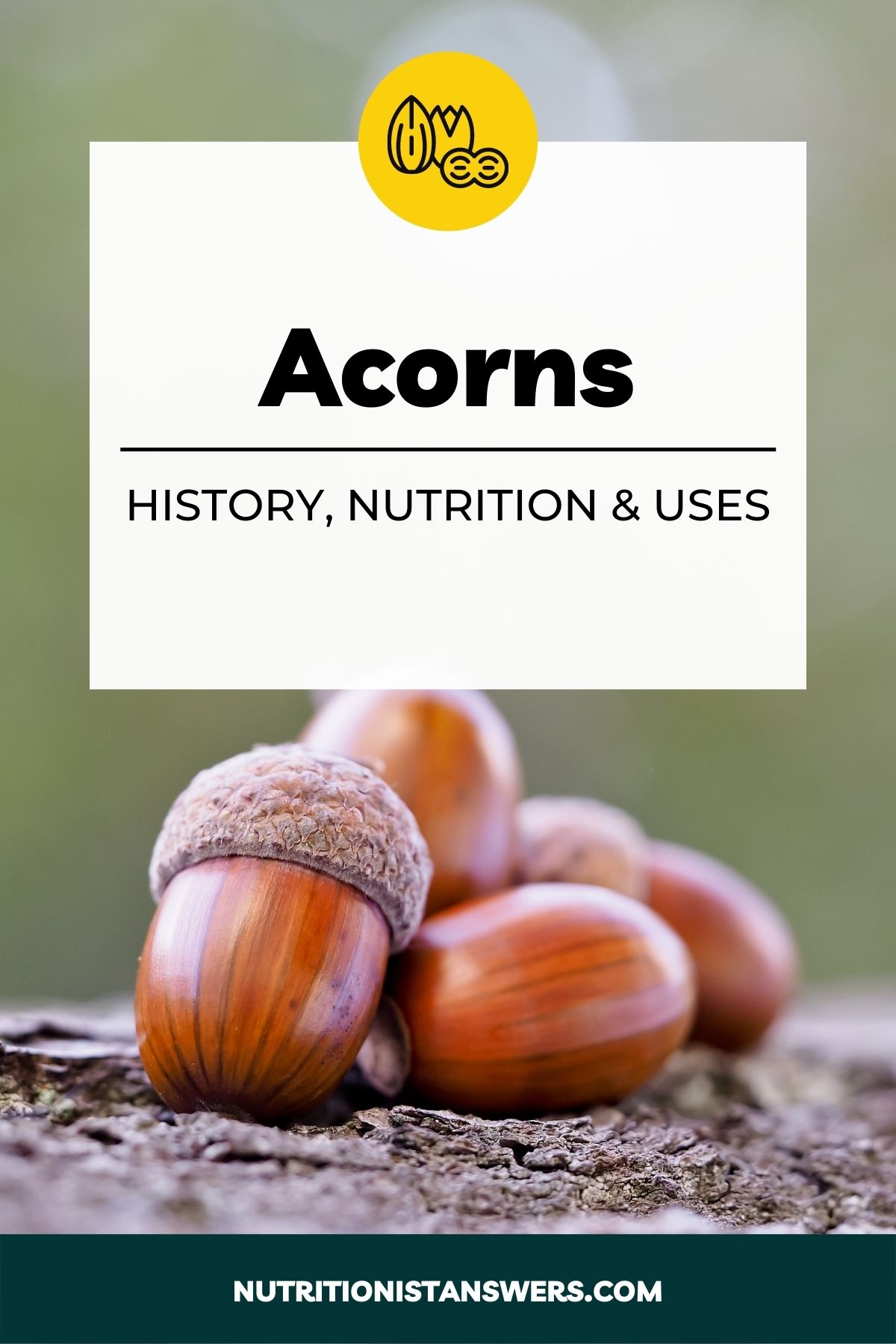Pecans and almonds are two popular nuts that make great snacks and can be used in a variety of recipes, both sweet and savory.
Both nuts are delicious and provide healthy fats and minerals. However, there are some differences to consider when choosing between the two.
In this article, we’ll explore the similarities and differences between pecans and almonds, in terms of nutrition, taste, available forms, prices, and uses.
Please note that this article contains affiliate links. If you click one of these links and make a purchase, we may earn a commission. As an Amazon Associate, we earn from qualifying purchases.
What are pecans?
Pecans are the nuts that grow on pecan trees (Carya illinoinensis), which are native to Mexico and the United States, where they have been used for centuries by Native Americans (1).
These oval-shaped nuts have a smooth, hard shell with a distinct ridged pattern. When cracked open, they reveal a reddish-brown nut kernel with vertical ridges and a cream-colored interior.
Pecans have a rich, buttery flavor with a slightly sweet and nutty taste and a creamy mouthfeel.
You can find pecans at most supermarkets, health food stores, and online retailers. They are often located in the baking aisle or the bulk foods section.
Pecans can be used in a variety of ways, whether you’re looking to add crunch to salads or baked goods or create standout dishes like pecan pie or pecan-crusted fish.
What are almonds?
Almonds are considered a type of tree nut, though they are technically seeds that are produced by the almond tree (Prunus dulcis), which is native to Central Asia (2).
They are shaped like a teardrop and have a hard outer shell that must be cracked and removed before eating. Inside, the edible nut kernel is cream-colored and covered by a thin brown skin.
Almonds have a delicate and slightly sweet, nutty flavor, with just a hint of bitterness. Their crunchy texture makes them a popular snack.
You’ll find almonds in the baking aisle or bulk foods section of most supermarkets and health food stores. They are available in many different forms, including whole, sliced, and slivered.
Almonds are incredibly versatile and can be used in everything from trail mixes and baked goods to savory dishes like salads and pilafs.
Pecans vs almonds
Pecans taste rich, buttery, and slightly sweet, while almonds have a more delicate, somewhat bitter flavor and crunchier texture.
Both nuts are high in fat, low in carbohydrates, and provide a small amount of protein and fiber. They’re also rich in many minerals, such as copper, manganese, and magnesium.
Pecans are higher in calories and fat and offer higher amounts of thiamin (vitamin B1), with more than 20% of the Daily Value (DV) per serving.
Meanwhile, almonds are slightly higher in carbs and protein and are an especially rich source of vitamin E, providing nearly 50% of the DV per serving.
Here’s a more detailed review of how they compare in flavor, nutrition, available forms, prices, and recommended uses:
Flavor comparison
Pecans have a rich, buttery flavor that is slightly sweet and nutty.
Almonds have a more delicate flavor that’s nutty, sweet, and somewhat bitter.
Both pecans and almonds pair well with warm spices, like cinnamon and nutmeg, as well as chocolate, maple syrup, and many fruits.
Nutrition comparison
Here’s a side-by-side comparison of the calorie and macronutrient content of pecans and almonds, based on a 1-ounce (28-gram) serving size (3, 4):
| Nutrient | Pecans, unroasted (28g) | Almonds, unroasted (28g) |
| Calories | 196 | 164 |
| Protein | 3 grams | 6 grams |
| Fat | 20 grams | 14 grams |
| Saturated fat | 2 grams | 1 gram |
| Monounsaturated fat | 12 grams | 9 grams |
| Polyunsaturated fat | 6 grams | 4 grams |
| Carbohydrates | 4 grams | 6 grams |
| Fiber | 2.7 grams | 3.5 grams |
Calories
Pecans are 20% higher in calories than almonds due to their higher fat content.
A 1-ounce (28-gram) serving of pecans (roughly 19 pecan halves) provides 196 calories, while the same serving of almonds (roughly 23 almonds) offers 164 calories.
Protein
Almonds provide twice as much protein per serving than pecans (6 grams vs 3 grams, respectively.)
If you’re trying to include more protein in your diet, almonds would be the better nut choice.
Fat
Both almonds and pecans are high in fat, but pecans provide about 40% more fat than almonds.
A 1-ounce (28-gram) serving of pecans contains 20 grams of fat, while an equal serving of almonds contains 14 grams of fat.
The extra fat makes pecans softer and gives them a more buttery mouthfeel, compared to almonds.
Both pecans and almonds are both high in heart-healthy monounsaturated fats and low in saturated fats, which makes them wonderful foods to include more of in your diet.
If you’re on a high-fat, low-carbohydrate diet, like keto, pecans are a better choice than almonds.
Carbohydrates
Like most nuts, pecans and almonds are fairly low in carbohydrates.
Almonds are 50% higher in carbohydrates, providing 6 grams per serving compared to the 4 grams found in pecans.
If you are following a low-FODMAP diet, pecans are the better choice. A traditional one-ounce serving of pecans is low-FODMAP, while almonds are only low-FODMAP in small portions (up to 10 nuts.)
Vitamins and minerals
Here’s an overview of the vitamin and mineral content of pecans and almonds, based on a 1-ounce (28-gram) serving (3, 4):
| Nutrient | Pecans, unroasted (28g) | Almonds, unroasted (28g) |
| Vitamin A | 1 mcg RAE (<1% DV) | 0 mcg RAE (0% DV) |
| Vitamin B1 (Thiamin) | 0.19 mg (16% DV) | 0.06 mg (5% DV) |
| Vitamin B2 (Riboflavin) | 0.04 mg (3% DV) | 0.3 mg (23% DV) |
| Vitamin B3 (Niacin) | 0.3 mg (2% DV) | 1 mg (6% DV) |
| Vitamin B5 (Pantothenic acid) | Not listed | 0.1 mg (2% DV) |
| Vitamin B6 (Pyridoxine) | 0.06 mg (4% DV) | 0.04 mg (2% DV) |
| Vitamin B9 (Folate) | 6 mcg (2% DV) | 13 mcg (3% DV) |
| Vitamin B12 (Cobalamin) | 0 mcg (0% DV) | 0 mcg (0% DV) |
| Vitamin C | 0.3 mg (<1% DV) | 0 mg (0% DV) |
| Vitamin D | 0 mcg (0% DV) | 0 mcg (0% DV) |
| Vitamin E | 0.4 mg (3% DV) | 7 mg (47% DV) |
| Vitamin K | 1 mcg (1% DV) | 0 mcg (0% DV) |
| Choline | 12 mg (2% DV) | 15 mg (3% DV) |
| Sodium | 0 mg (0% DV) | <1 mg (<1% DV) |
| Potassium | 116 mg (2% DV) | 208 mg (4% DV) |
| Calcium | 20 mg (2% DV) | 76 mg (6% DV) |
| Phosphorus | 79 mg (6% DV) | 136 mg (11% DV) |
| Magnesium | 34 mg (8% DV) | 77 mg (18% DV) |
| Iron | 0.7 mg (4% DV) | 1.1 mg (6% DV) |
| Zinc | 1.3 mg (12% DV) | 0.9 mg (8% DV) |
| Copper | 0.34 mg (38% DV) | 0.29 mg (32% DV) |
| Manganese | 0.8 mg (35% DV) | 0.6 mg (26% DV) |
| Selenium | 1.1 mcg (2% DV) | 1.2 mcg (2% DV) |
Almonds are especially high in riboflavin (vitamin B2) and vitamin E, providing 23% and 47% of the Daily Value (DV), respectively.
Pecans, on the other hand, provide much higher amounts of thiamin (vitamin B1), with 16% DV per serving. They also offer small amounts of other B vitamins.
Both almonds and pecans are rich in minerals. However, pecans are higher in zinc, copper, and manganese, while almonds offer more calcium, phosphorus, and magnesium.
Available forms
1. Whole (pecans and almonds)
Most pecans and almonds are sold whole with their shells removed.
They’re available at most supermarkets and health food stores, typically in the baking aisle, bulk foods section, or snack aisle. You can also buy them in bulk online from Nuts.com.
Whole nuts are generally cheaper than pre-chopped or sliced options. You can save money by buying whole pecans or almonds and chopping them on your own at home.
You can typically find both raw and roasted and salted and unsalted versions of pecans and almonds at high-end grocery stores.
2. Pre-cut (pecans and almonds)
Pre-cut almonds and pecans are a convenient option, as they’re ready to eat or use in recipes without any preparation.
They’re typically found in the baking aisle or bulk foods section of the grocery store and can also be purchased online.
Pecans are available chopped, while almonds are sold sliced or slivered (peeled and cut into little sticks).
3. Flour (pecans and almonds)
Nuts flours made from pecans or almonds are popular gluten-free alternatives to wheat flour. They can be used in a variety of recipes, from baked goods to breaded meats and meatballs.
Almond flour is usually located in the baking aisle or bulk foods section of most supermarkets, and can also be purchased online.
Pecan flour is less popular than almond flour but can also be found at many supermarkets and health food stores.
4. Butters (pecans and almonds)
Almond butter is a popular alternative to peanut butter and can be found at more grocery stores or online.
Pecan butter is also available, but tends to be expensive since pecans are a higher-priced nut.
5. Oil (pecans and almonds)
Roasted pecan oil is available from brands like La Tourangelle and can be used in cooking.
It has a bold nutty taste and aroma, so it works best in dishes that could use a nutty kick.
Pecan oil has a very high smoke point of 243℃ (even higher than peanut oil) so it can be used for high-heat cooking like sauteeing, grilling, or stir frying (5)
Almond oil (also called sweet almond oil) is a cooking oil made by extracting the fat from almonds. It is not the same as bitter almond oil, which is an essential oil made from bitter almonds (6)
Sweet almond oil has a mild, nutty flavor and can be used in salad dressings and marinades or drizzled over fish, meats, vegetables, and grain or legume-based dishes.
6. Milks (pecans and almonds)
Almond milk is an extremely popular non-dairy milk product that should be available in both the refrigerated and shelf-stable sections of most grocery stores.
Pecan milk exists but tends to be expensive and harder to find. THIS PKN is a popular brand available on Amazon.
Cost
Pecans are almost twice as expensive as almonds.
A 1-pound (16-ounce) bag of pecans typically costs $10-12, while almonds cost $5-7 for the same amount.
You can save money by buying nuts in bulk and storing them in your freezer to extend their shelf life. But if you’re on a budget, almonds may be the better choice.
Recommended uses
Pecans and almonds can be used in many of the same ways.
1. Trail mixes and snacks
Both pecans and almonds are great ingredients to use in trail mixes and snack bars, providing a satisfying crunch and nutty flavor.
Pecans have a richer flavor profile with a slightly creamier texture, making them an excellent addition to baked snacks like granola bars and muffins.
Conversely, almonds have a more subtle flavor that pairs well with savory or sweet snacks. They also have a firmer texture, which can provide extra bite to chewy snack bars.
2. Baked goods and desserts
Almonds and pecans are a fantastic way to elevate your favorite baked goods and desserts
Both nuts can be used as a crunchy topping or to add texture and flavor to cakes, muffins, pies, cookies, and other treats.
Pecans have a rich, buttery flavor that pairs well with sweet treats like brownies, cakes, and cookies. They are also featured in classic desserts like pecan pie and pralines.
Almonds, on the other hand, have a more delicate flavor and work particularly well in recipes that call for a nutty crunch, like biscotti and shortbread. They are also a key ingredient in desserts like macarons, almond cake, and amaretti cookies.
3. Salads and side dishes
Pecans and almonds are both excellent additions to salads and side dishes, adding texture and depth of flavor.
Almonds pair particularly well with leafy greens, like arugula or kale, and can also be used in grain-based salads or as a crunchy topping for roasted vegetables.
Pecans can be used in fruit-based salads, like a spinach salad with strawberries and goat cheese, or in savory dishes like roasted butternut squash with pecans.
The choice between pecans and almonds may depend on personal preference or the flavors of the dish being made, with pecans providing a richer, buttery taste, and almonds offering a more subtle nutty flavor.
4. Breaded meats and fish
When making breaded meats and fish, try incorporating almonds and pecans into the breading for a rich, nutty flavor and crunchier texture.
Simply pulse the nuts in a food processor and mix with breadcrumbs or flour, then dip the protein in beaten egg and coat with the nutty mixture before cooking.
Keep in mind that nuts can burn quickly, so you’ll need to adjust the cooking time accordingly. Aim for a golden brown crust that is crispy on the outside and cooked through on the inside.
Both pecans and almonds work well with lean proteins like chicken, tilapia, and cod, as well as richer meats such as pork and salmon.
Final thoughts
Pecans and almonds are both delicious tree nuts. Almonds are crunchy and have a mild, nutty flavor, while pecans taste rich and buttery with a softer, creamier texture.
Pecans are higher in fat, calories, and thiamin (vitamin B1). Almonds are slightly higher in carbs and protein and provide much more vitamin E (47% DV per serving) than pecans.
Both almonds and pecans are available in whole, pre-cut, or flour forms at most supermarkets. However, pecans are about twice as expensive as almonds.
Whether you’re looking for a crunchy topping, nutty dessert, or savory side dish, pecans and almonds are an excellent way to add texture and flavor to any recipe.
Want more? Learn the difference between Almonds and Brazil Nuts, Almonds and Cashews, Almonds and Pistachios, Almonds and Peanuts, and Almonds and Walnuts.
Amy Richter is a Registered Dietitian Nutritionist based in Missouri. She is an experienced nutrition writer and medical advisor for Healthline and Medical News Today. Amy is passionate about all things food-related and enjoys translating complex science into easy-to-understand articles.





